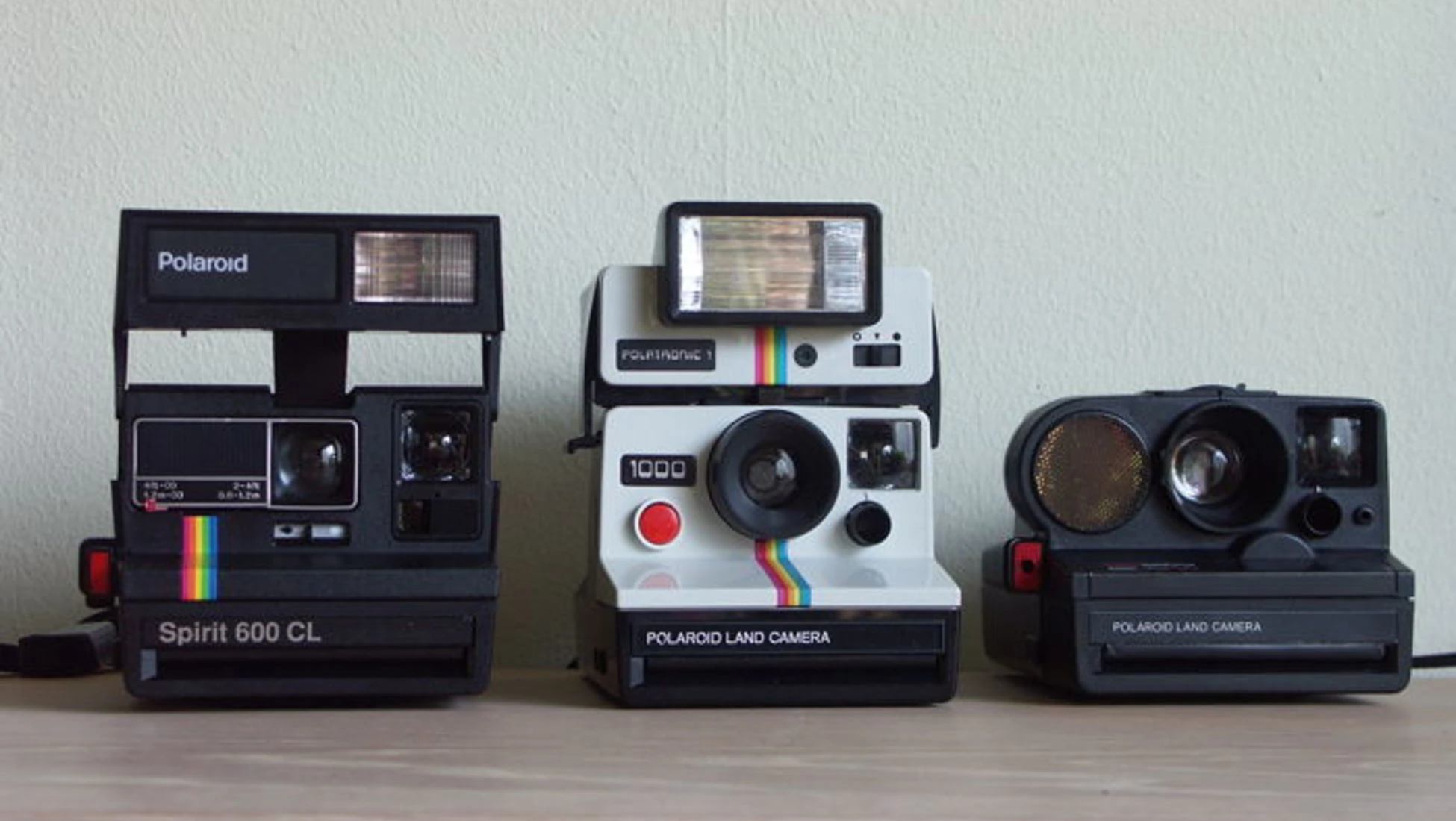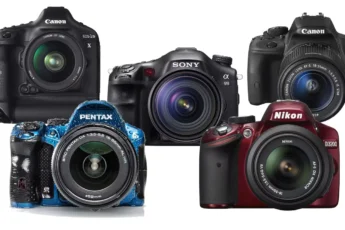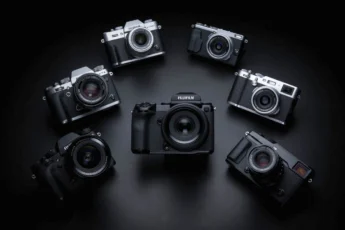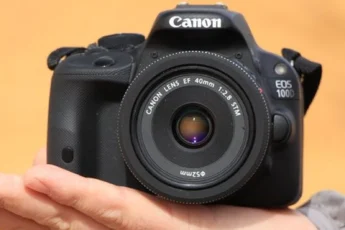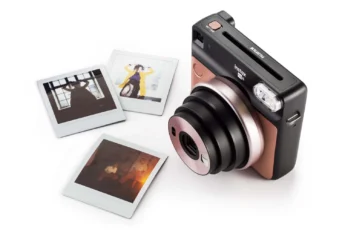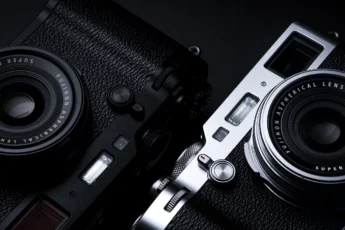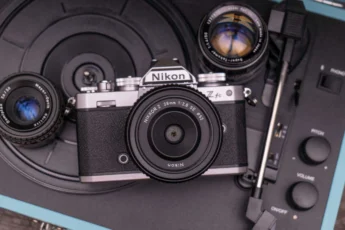Picture this: it’s a warm summer day in the mid-’90s, and you’re at a family gathering, eagerly waiting to snap a photo with your brand new camera. The excitement is palpable as you carefully load the film, adjust the settings, and line up the perfect shot. With a satisfying click, you capture a moment that will be cherished for years to come. This was the magic of photography in the ’90s – a time when cameras were more than just tools; they were companions that helped us preserve our most precious memories.
As a child of the ’90s, I have fond recollections of my first camera – a compact point-and-shoot that I carried with me everywhere. It was a gateway to creativity, allowing me to experiment with composition, lighting, and storytelling. Little did I know then that my humble camera was part of a remarkable era in photography, one that would leave an indelible mark on the industry and shape the way we capture and share our experiences.
In this blog post, we’ll embark on a nostalgic journey through the world of ’90s cameras, exploring the iconic models that defined the decade and the features that made them so beloved. Whether you’re a seasoned photographer or simply a lover of all things retro, join me as we uncover the gems that made the ’90s a golden age for photography.
Overview of ’90s Cameras
The 1990s marked a pivotal time in the history of photography, as the industry witnessed a gradual shift from traditional film cameras to the emergence of digital technology. While digital cameras were still in their infancy, with limited resolution and high costs, film cameras continued to dominate the market, offering photographers a wide range of options to suit their needs and preferences.
During this decade, camera manufacturers focused on refining their designs, introducing innovative features, and improving user experience. Autofocus systems became more sophisticated, allowing for faster and more accurate focusing, while metering systems evolved to provide better exposure control. Compact point-and-shoot cameras gained popularity, thanks to their portability and ease of use, making photography more accessible to the masses.
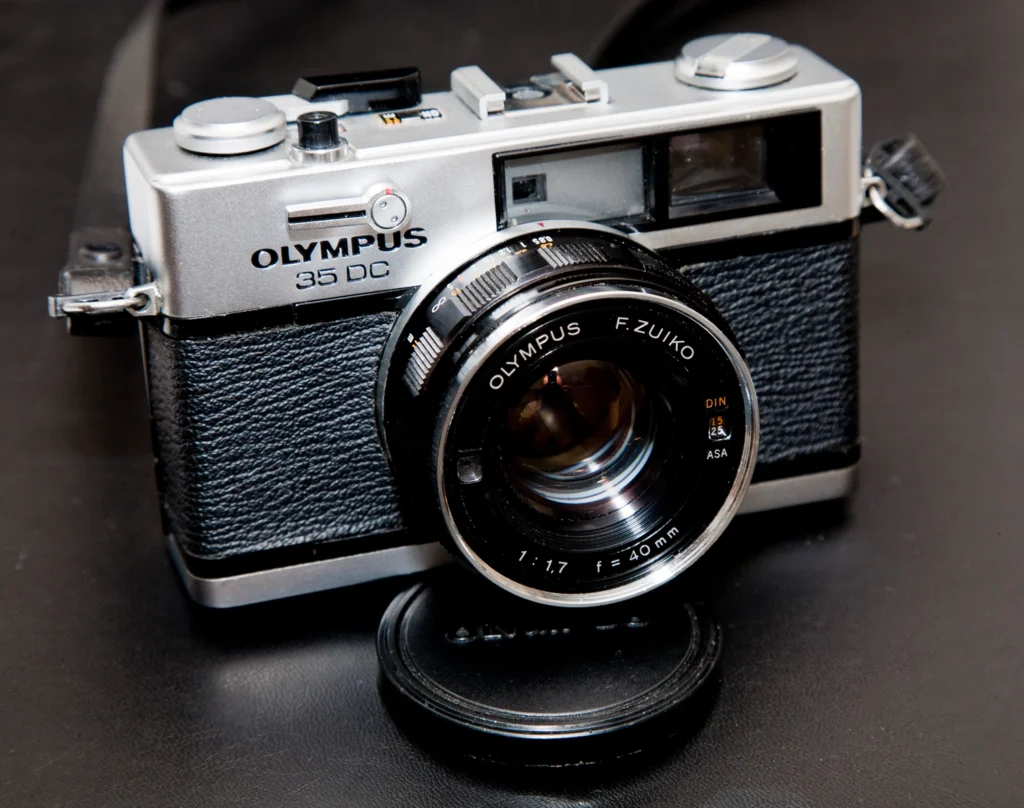
Among the most notable advancements in ’90s cameras was the introduction of the Advanced Photo System (APS). Developed by a consortium of camera manufacturers, APS aimed to simplify photography by introducing a new film format that was easier to load and offered multiple image sizes on the same roll. Although APS didn’t entirely replace traditional 35mm film, it was a significant step towards making photography more user-friendly.
As the decade progressed, camera technology continued to evolve, laying the groundwork for the digital revolution that would transform the industry in the years to come. However, the ’90s remained a time when film cameras reigned supreme, and photographers embraced the unique character and aesthetic that only film could provide.
Popularity of Cameras in the ’90s
The 1990s witnessed an unprecedented surge in the popularity of cameras, as photography became more accessible and affordable than ever before. According to a report by the Photo Marketing Association International, camera sales in the United States alone reached a staggering $6.9 billion in 1999, a testament to the growing enthusiasm for photography.
Several factors contributed to the widespread adoption of cameras during this era. Firstly, the introduction of compact point-and-shoot cameras made photography more user-friendly, allowing even novice photographers to capture high-quality images with ease. These cameras were often affordably priced, making them an attractive option for budget-conscious consumers.
Secondly, the ’90s saw a rise in disposable income, as the global economy experienced a period of growth and prosperity. This increased purchasing power enabled more people to invest in cameras and photography equipment, fueling the industry’s expansion.
Moreover, the ’90s marked a time when personal expression and self-documentation became increasingly important. The desire to capture and preserve life’s milestones, such as weddings, graduations, and family vacations, drove the demand for cameras. Photography became a means of storytelling, allowing individuals to create tangible memories that could be cherished for generations.
The popularity of cameras in the ’90s also had a significant cultural impact, shaping the way we consume and share visual content. From the rise of photo albums and scrapbooking to the emergence of online photo sharing platforms like Ofoto (later acquired by Kodak), the ’90s laid the foundation for the digital photography revolution that would transform the industry in the new millennium.
Noteworthy ’90s Cameras
Canon EOS 3
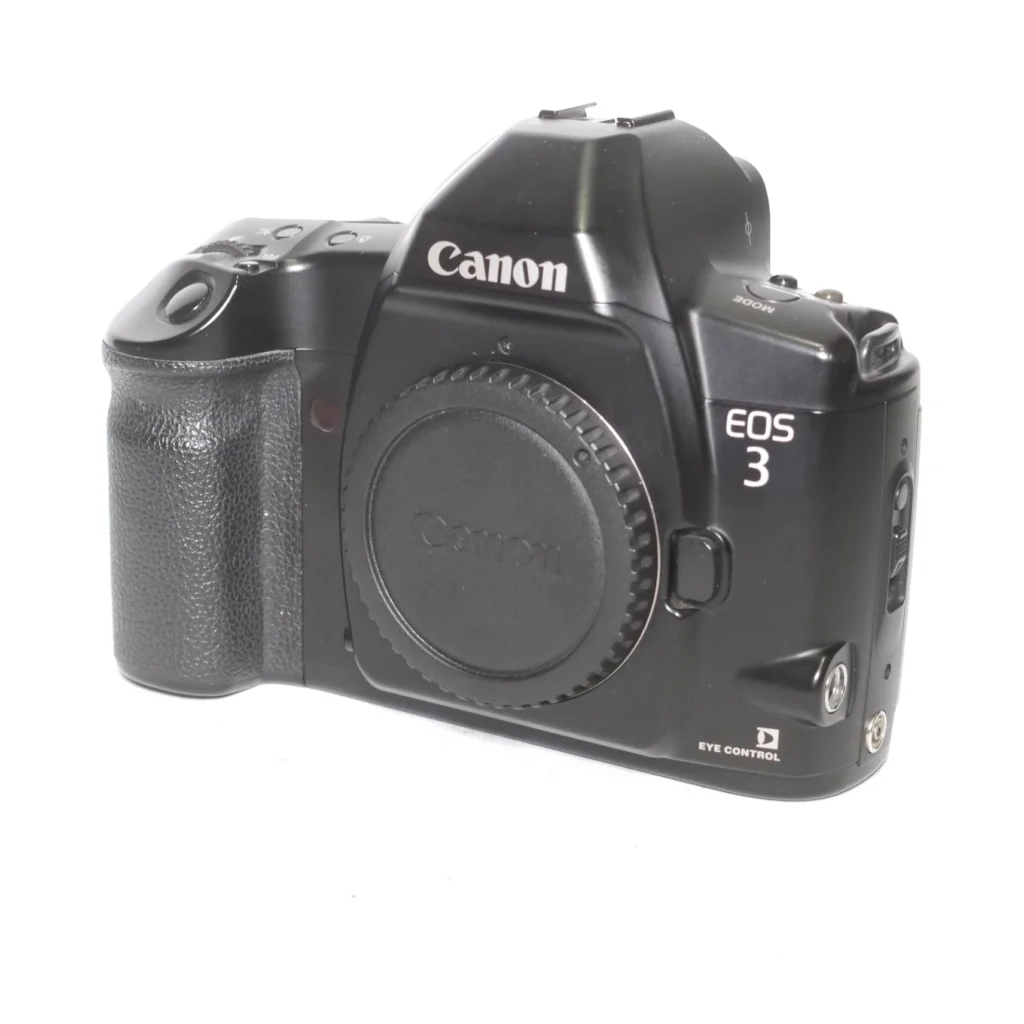
The Canon EOS 3, released in 1998, was a groundbreaking 35mm SLR camera that showcased the company’s commitment to innovation and user-centric design. With its sleek, ergonomic body and advanced features, the EOS 3 quickly became a favorite among professional photographers and enthusiasts alike.
One of the most remarkable features of the EOS 3 was its Eye-Controlled AF system, which allowed photographers to select the desired focus point simply by looking at it through the viewfinder. This intuitive technology streamlined the focusing process, enabling users to capture fleeting moments with unparalleled speed and precision.
Eye-Controlled AF Feature
The Eye-Controlled AF feature was a true game-changer in the world of autofocus cameras. By utilizing infrared sensors in the viewfinder, the EOS 3 could detect the photographer’s eye movement and automatically focus on the desired subject. This hands-free focusing method was particularly useful in fast-paced situations, such as sports photography or wildlife shoots, where every second counted.
The EOS 3’s Eye-Controlled AF system offered a level of customization that catered to individual preferences. Users could calibrate the camera to recognize their unique eye movements, ensuring optimal performance and accuracy. With a selection of 45 focus points spread across the viewfinder, photographers had the flexibility to compose their shots with precision, knowing that the camera would swiftly lock onto the chosen subject.
Nikon N90s
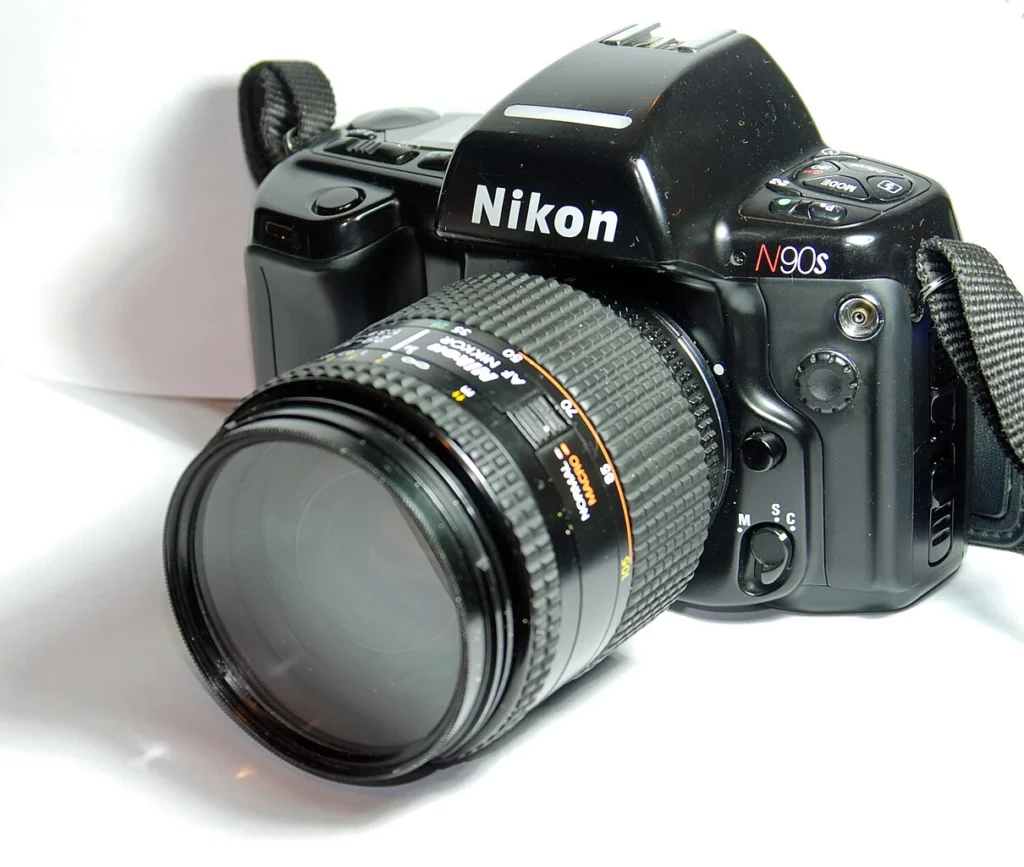
The Nikon N90s, also known as the F90x in some markets, was a feature-packed 35mm SLR camera that earned a loyal following among photographers in the ’90s. Released in 1994 as an upgrade to the original N90/F90, the N90s boasted improved autofocus performance, faster shutter speeds, and a host of customizable settings that appealed to both amateur and professional users.
Multiple Models Owned
Many photographers found themselves owning multiple N90s bodies throughout the years, a testament to the camera’s reliability and versatility. The N90s was built to last, with a rugged construction that could withstand the rigors of professional use. Its compatibility with a wide range of Nikon lenses, including both AF and manual focus options, made it a popular choice for those who already invested in the Nikon ecosystem.
The N90s offered a level of customization that was unprecedented at the time. Users could fine-tune various settings, such as autofocus tracking sensitivity, exposure compensation, and flash sync modes, to suit their specific needs. This flexibility allowed photographers to adapt the camera to their shooting style, whether they were capturing fast-moving subjects or creating carefully composed landscapes.
Nikon F4
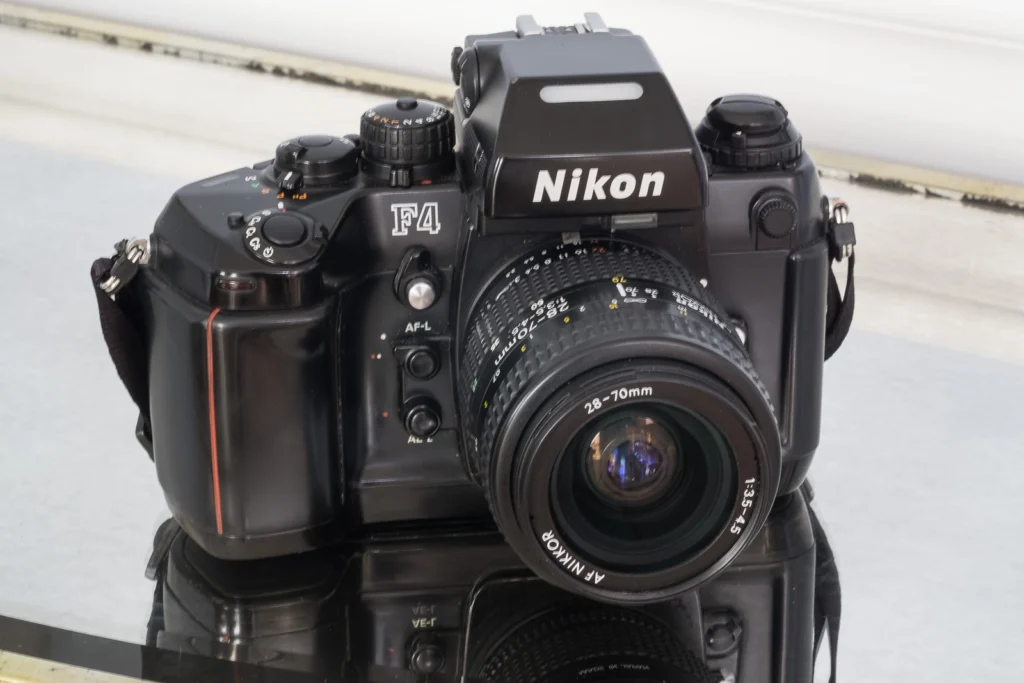
The Nikon F4, introduced in 1988, was a professional-grade 35mm SLR camera that set the standard for performance and durability in the ’90s. As the successor to the iconic Nikon F3, the F4 incorporated advanced features and technology that made it a favorite among photojournalists, sports photographers, and serious enthusiasts.
Features and Usage
One of the standout features of the Nikon F4 was its extensive metering capabilities. The camera offered full matrix metering with all AI and AI-s manual focus lenses, as well as AF, AF-I, AF-S, and G lenses. This open-loop exposure system provided accurate and consistent results across a wide range of lighting conditions, making the F4 a reliable tool for demanding professionals.
The F4’s rugged construction and weather-sealing made it an ideal choice for photographers working in challenging environments. The camera’s durable body could withstand the elements, ensuring that it would keep functioning even in harsh conditions. Additionally, the F4’s interchangeable viewfinders allowed users to adapt the camera to their specific needs, whether they required a high-eyepoint viewfinder for use with glasses or a waist-level finder for discreet shooting.
Nikonos V
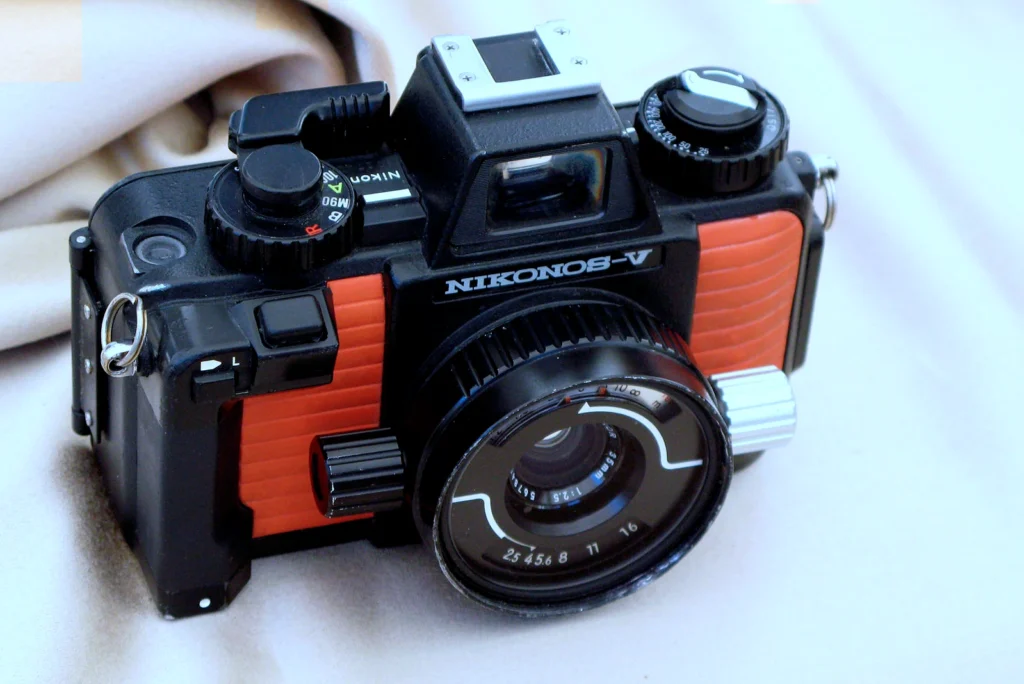
The Nikonos V, released in 1984, was a unique and highly specialized camera designed for underwater photography. As the fifth and final model in Nikon’s Nikonos series of amphibious cameras, the Nikonos V represented the pinnacle of underwater imaging technology in the ’90s, offering photographers unparalleled opportunities to explore the wonders of the aquatic world.
Suitable for Rainy Conditions
While primarily designed for underwater use, the Nikonos V also proved to be an excellent choice for photography in rainy or humid conditions. The camera’s waterproof and weatherproof construction made it resistant to the elements, allowing photographers to capture stunning images even in challenging weather.
The Nikonos V’s chunky dials and winder were perfectly suited for use in the water, as they provided a secure grip and easy operation even when wearing gloves or dealing with wet hands. The camera’s bright viewfinder made composing shots a breeze, even in low-light conditions or when wearing a diving mask.
The Nikonos V’s compatibility with a range of dedicated underwater lenses, including the renowned UW-Nikkor series, allowed photographers to capture stunning wide-angle and close-up images beneath the surface. The camera’s manual focus and aperture-priority exposure modes provided a level of creative control that was unmatched by other underwater cameras of the era.
Nikon F5
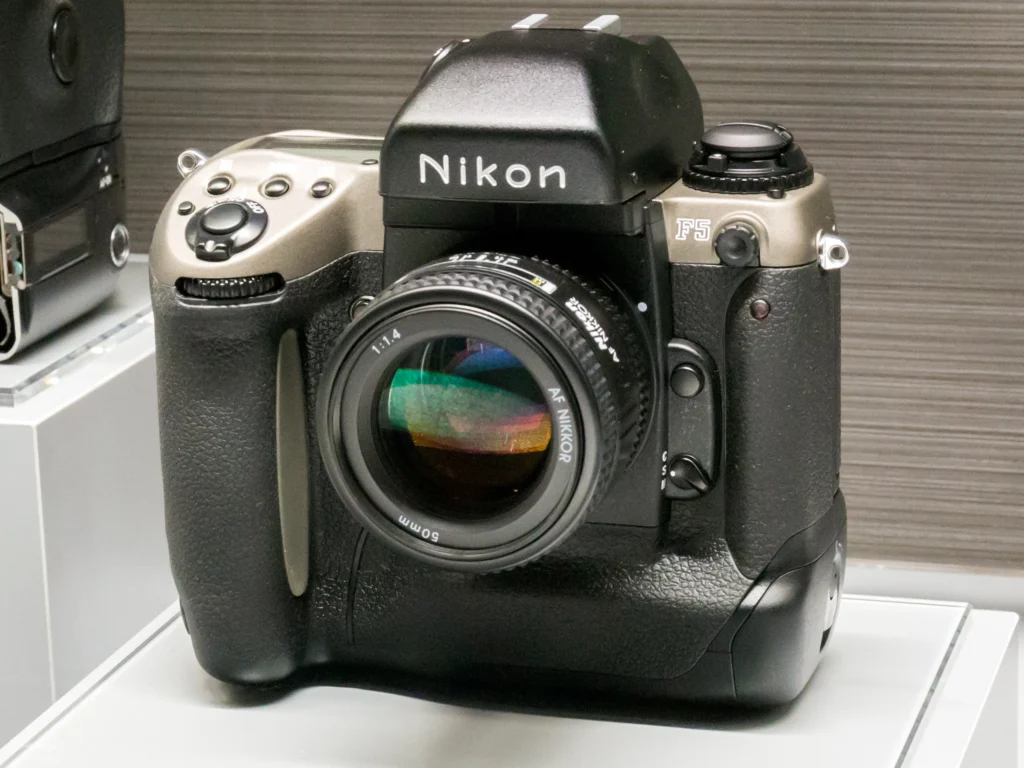
The Nikon F5, launched in 1996, was a professional-grade 35mm SLR camera that represented the pinnacle of Nikon’s film camera technology. With its advanced features, exceptional build quality, and unrivaled performance, the F5 quickly became the go-to camera for photographers who demanded the very best.
Highlighted Features
One of the most impressive features of the Nikon F5 was its high-speed continuous shooting capabilities. The camera could capture up to 8 frames per second with its standard power drive, making it an ideal choice for sports and action photography. When paired with the optional MB-30 battery pack, the F5 could achieve an astonishing 10 frames per second, rivaling the performance of modern digital cameras.
The F5’s autofocus system was also a force to be reckoned with. With its 5-area AF sensor and the ability to track moving subjects with ease, the camera provided photographers with the tools they needed to capture sharp, focused images in even the most challenging situations. The F5’s 3D Color Matrix Metering system ensured accurate exposures, while its customizable controls allowed users to tailor the camera to their specific needs.
User Experiences with ’90s Cameras
For many photographers, using cameras from the ’90s was a transformative experience that shaped their approach to the craft. The tactile nature of these cameras, with their manual controls and film-based workflow, forced users to slow down and be more deliberate in their shot selection. This thoughtful approach to photography often resulted in more meaningful and impactful images.
One of the most significant aspects of using ’90s cameras was the sense of anticipation and surprise that came with developing a roll of film. Unlike modern digital cameras, which provide instant feedback, film cameras required photographers to wait until the roll was complete and developed before they could see the results. This delayed gratification added an element of excitement and mystery to the process, as photographers eagerly awaited the moment when they could hold their prints in their hands.
For many, the imperfections and quirks of ’90s cameras were part of their charm. The slight variations in exposure, the occasional light leak, and the unique color rendition of different film stocks all contributed to the distinct aesthetic that defined the era. These characteristics, which some might consider flaws, were often embraced by photographers as a way to add character and personality to their images.
In today’s digital age, there has been a resurgence of interest in ’90s cameras and the film photography process. Many photographers, both young and old, are rediscovering the joys of shooting with these classic cameras, appreciating the craftsmanship, simplicity, and unique results they produce. This renewed enthusiasm for ’90s cameras has led to a thriving community of film photography enthusiasts, who share their experiences, techniques, and images through social media and online platforms.
Conclusion
The cameras of the 1990s left an indelible mark on the world of photography, shaping the way we capture, share, and appreciate images. From the groundbreaking autofocus systems of the Canon EOS 3 and Nikon N90s to the rugged reliability of the Nikon F4 and the underwater prowess of the Nikonos V, these cameras exemplified the innovation, craftsmanship, and user-centric design that defined the era.
As we look back on the ’90s, it’s clear that the decade was a pivotal time for photography, laying the foundation for the digital revolution that would transform the industry in the years to come. However, the enduring appeal of these classic cameras reminds us that there is something special about the tactile, analog experience of shooting with film – an experience that continues to captivate photographers to this day.
Whether you’re a seasoned professional or a curious enthusiast, exploring the world of ’90s cameras can be a rewarding and enriching experience. By understanding the history, features, and user experiences associated with these iconic cameras, we can gain a deeper appreciation for the art and craft of photography, and perhaps even find inspiration for our own creative pursuits.

